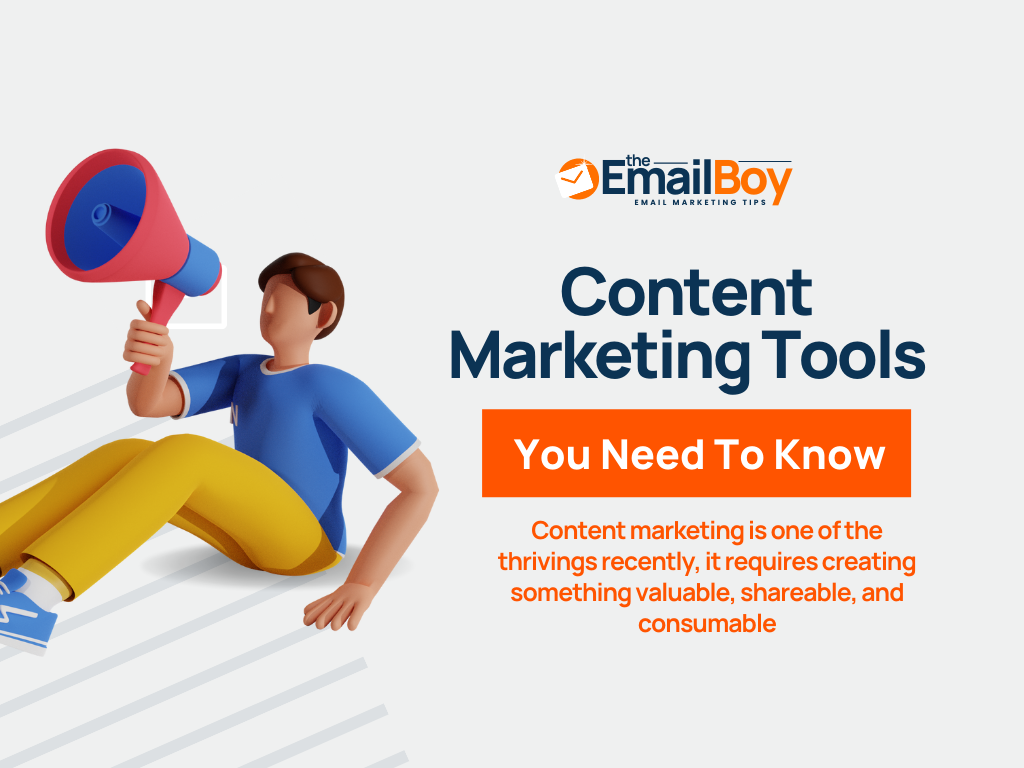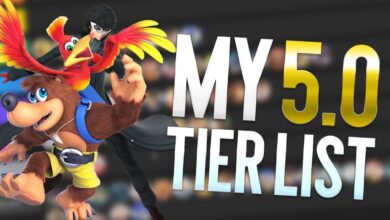
Best Content Marketing Tools Your Ultimate Guide
Best content marketing tools are essential for modern content creation. They streamline the process from planning and creation to optimization and distribution. This guide explores a wide range of tools, from popular choices to emerging trends, helping you navigate the digital landscape and maximize your content impact.
We’ll delve into the key functionalities of different categories of tools, offering practical examples and comparisons. You’ll learn how to choose the right tools for your specific needs, integrating them effectively into your workflow, and tracking performance to measure success.
Introduction to Content Marketing Tools
Content marketing tools are essential digital resources that streamline and enhance the entire content creation process. From ideation and planning to distribution and analysis, these tools empower marketers to produce high-quality content more efficiently and effectively. They automate tasks, track performance, and offer insights that inform strategic decisions. Without them, creating and managing a robust content marketing strategy can be a complex and time-consuming endeavor.Modern content creation relies heavily on tools to stay competitive.
The digital landscape is constantly evolving, demanding new strategies and approaches. Tools provide the necessary agility and flexibility to adapt to these changes, enabling marketers to stay ahead of the curve. They enable efficient collaboration, rapid prototyping, and data-driven decision making, which are crucial for success in today’s market.
Categories of Content Marketing Tools
Content marketing tools are broadly categorized into distinct groups, each specializing in a specific stage of the content lifecycle. Understanding these categories is critical for selecting the right tools to support your content marketing efforts.
Planning Tools
Planning tools are crucial for strategizing and organizing content creation. They help define content calendars, assign tasks, and track progress. This proactive approach streamlines the entire content creation pipeline. These tools often integrate with other content marketing tools, allowing for seamless workflows and better coordination. Examples include tools like Trello, Asana, and Monday.com, which facilitate project management and task allocation.
Creation Tools
Creation tools are indispensable for developing various content formats. These tools facilitate the production of high-quality content, whether it’s writing articles, creating videos, or designing graphics. They offer features like collaboration, version control, and style guides, ensuring consistency and accuracy. Tools like Grammarly, Canva, and Adobe Creative Suite are examples of these essential tools.
Optimization Tools
Optimization tools are vital for ensuring that content is easily discoverable and engaging. They help improve search engine rankings, identify s, and analyze website traffic. Tools like SEMrush and Ahrefs assist in understanding search trends, research, and backlink analysis. These tools enhance visibility and drive organic traffic.
Distribution Tools
Distribution tools are critical for reaching target audiences. They automate social media posting, email marketing, and other forms of content promotion. These tools often provide analytics to track campaign performance, helping you measure the effectiveness of your content marketing strategy. Tools like Buffer, Hootsuite, and Mailchimp are popular choices in this category.
Core Functionalities of Content Marketing Tools
| Category | Core Functionalities |
|---|---|
| Planning | Content calendar creation, task management, collaboration, workflow automation |
| Creation | Content generation, editing, formatting, design, collaboration, style guide management |
| Optimization | research, analysis, website traffic tracking, content performance analysis |
| Distribution | Social media scheduling, email marketing, content promotion, analytics, campaign tracking |
Popular Content Marketing Tools
Content marketing relies heavily on the right tools to streamline creation, distribution, and analysis. Choosing the best tools can significantly impact the effectiveness of your campaigns. This section dives into popular options across various categories, highlighting their strengths, weaknesses, and pricing models.Choosing the right tools for content marketing can significantly impact the success of your campaigns. A well-selected toolset can streamline creation, distribution, and analysis, leading to improved efficiency and better results.
Content Creation Tools
Content creation tools empower marketers to produce high-quality content efficiently. These tools often offer features for brainstorming, outlining, writing, editing, and formatting. Different tools cater to various needs and budgets, from simple note-taking apps to sophisticated writing platforms.
Choosing the right content marketing tools is crucial for success, but understanding how long SEO takes to show results is equally important. A solid strategy, paired with the right tools, can significantly impact your website’s visibility, but the time it takes to climb the search engine rankings varies greatly. Factors like your industry, competition, and the quality of your content all play a role, which is why it’s essential to consult resources like how long does seo take to get a clearer picture.
Ultimately, the best content marketing tools, used effectively, are your key to lasting visibility and organic growth.
- Google Docs/Microsoft Word: These ubiquitous word processors provide fundamental writing and editing capabilities. They are often readily available, easy to use, and suitable for simple to complex content formats. Their collaborative features make them popular for team projects. However, advanced features for content optimization and analysis may be lacking.
- Hemingway Editor: This tool focuses on readability and clarity. It analyzes writing for conciseness, sentence structure, and vocabulary. It’s a great tool for ensuring your content is easy to understand and engaging. However, it doesn’t provide comprehensive content optimization tools beyond readability.
- Jasper: A sophisticated AI writing tool that offers various content formats and styles. It can help with brainstorming, writing, and even editing. Jasper excels in generating diverse content types quickly. However, the high cost and potential for output that feels robotic or generic can be downsides.
Content Scheduling and Distribution Tools, Best content marketing tools
These tools help you strategically distribute content across different platforms, maximizing its reach and engagement.
- Hootsuite: A comprehensive social media management platform, Hootsuite allows you to schedule posts across multiple platforms, track performance, and engage with audiences. Its extensive features are beneficial for large-scale social media campaigns, but the advanced features come with a higher price tag.
- Buffer: A user-friendly tool for scheduling posts on various social media platforms. Buffer simplifies scheduling and provides insights into post performance. Its straightforward interface is a major advantage, but more complex analytical features may be lacking compared to more comprehensive tools.
- Later: Specializing in visual content scheduling, Later focuses on Instagram, Pinterest, and Facebook. It’s a great option for visually driven content marketers. However, its focus on visual content may limit its utility for other content formats.
Content Analytics Tools
These tools provide insights into content performance, helping you understand what resonates with your audience and what doesn’t.
- Google Analytics: A powerful and free tool for tracking website traffic and user behavior. Google Analytics provides a wealth of data about content performance, allowing you to optimize your strategy. However, setting up and interpreting data can be complex for beginners.
- SEMrush: A robust tool that provides detailed content analysis, including research, backlink analysis, and competitor analysis. SEMrush is ideal for marketers wanting in-depth data, but the price point may be prohibitive for smaller businesses.
- Moz: Another comprehensive tool offering insights into , content, and backlinks. Moz provides valuable data for understanding content performance and making data-driven decisions. However, the cost and complexity of use can be significant factors for some users.
Comparison Table of Popular Tools
| Tool | Features | Pricing | User Reviews |
|---|---|---|---|
| Google Docs | Basic writing, editing, collaboration | Free (with Google Workspace) | High user satisfaction, praised for simplicity |
| Hootsuite | Social media management, scheduling, analytics | Paid, tiered pricing | Generally positive, appreciated for its comprehensive features |
| Jasper | AI-powered writing, brainstorming | Paid, tiered pricing | Mixed reviews, praised for AI capabilities, some users report output limitations |
| SEMrush | Comprehensive , content analysis | Paid, tiered pricing | High user satisfaction, noted for its depth of data |
| Later | Visual content scheduling | Paid, tiered pricing | Positive reviews for ease of use, good for visual content |
Choosing the Right Tools: Best Content Marketing Tools
Finding the perfect content marketing tools can feel like searching for a needle in a haystack. The sheer volume of options available can be overwhelming. However, careful consideration of your specific needs and goals will guide you towards the ideal tools to elevate your content strategy and drive results. Choosing the right tools is crucial for maximizing your content marketing efforts.The effectiveness of any content marketing strategy hinges on the tools used to execute it.
A well-chosen toolset can streamline workflows, improve collaboration, and ultimately enhance the quality and reach of your content. Conversely, ill-fitting tools can lead to wasted resources and decreased efficiency.
Key Factors to Consider
Careful consideration of several key factors is essential for selecting the right tools. These factors include budget constraints, team size, and the specific objectives of your content marketing strategy. Understanding these factors will enable you to choose tools that are not only effective but also sustainable within your current operational framework.
Alignment with Content Marketing Strategy
Aligning your chosen tools with your specific content marketing strategy is paramount. Tools should seamlessly integrate with your existing workflows and processes, supporting your overall content creation, distribution, and analysis objectives. Tools that don’t align with your strategy will hinder your progress and potentially lead to less efficient operations.
Evaluation Checklist
A well-structured checklist can significantly assist in evaluating potential content marketing tools. This checklist should incorporate factors like budget, team size, and desired outcomes. A comprehensive evaluation will ensure you select tools that best serve your current and future needs.
- Budget: Consider the pricing models (e.g., freemium, subscription) and associated costs. Evaluate whether the tool’s features and functionality justify the investment. Calculate the potential return on investment (ROI) of the tool based on anticipated results.
- Team Size: Assess the tool’s scalability to accommodate the size of your content marketing team. A tool suitable for a small team might prove cumbersome for a large team, leading to decreased efficiency and potential bottlenecks.
- Goals: Identify the specific goals of your content marketing strategy (e.g., lead generation, brand awareness, sales). Choose tools that directly support these goals and offer metrics for tracking progress. Consider if the tools support the metrics you need to monitor.
Evaluation Questions
Asking the right questions can significantly enhance your evaluation process. These questions should help you understand the tool’s capabilities, its compatibility with your current systems, and its overall suitability for your content marketing strategy. Thorough questioning will help you find a tool that perfectly fits your needs.
- Ease of Use: How intuitive is the tool’s interface and workflow? Can your team easily adapt to its features and functionalities?
- Integration Capabilities: Can the tool integrate with existing marketing platforms, social media accounts, and other crucial tools? Assess if the integration is seamless and reduces manual data entry.
- Customer Support: What level of customer support is provided? Evaluate the responsiveness and helpfulness of the support team in case of issues or questions.
- Scalability: Can the tool handle your projected growth and future content needs? Consider if the tool can accommodate your future team size and content volume.
- Reporting & Analytics: Does the tool provide comprehensive reporting and analytics to measure performance and track progress toward your goals? Evaluate the tools’ reporting features to see if they provide the metrics you need to monitor.
Utilizing Content Marketing Tools Effectively
Mastering content marketing tools is crucial for maximizing their potential. Effective integration into your workflow and a strategic approach to content creation and distribution are paramount for achieving measurable results. This involves understanding how different tools complement each other and optimizing content performance to drive engagement and conversions.Choosing the right tools is just the beginning; the real magic happens when you learn to use them effectively.
This section dives deep into best practices for integrating your chosen tools into your workflow, maximizing their potential for content creation and distribution, and optimizing content performance.
Finding the best content marketing tools can be tricky, but understanding the power of social media is key. Platforms like Instagram and Twitter offer amazing opportunities to reach your target audience, which directly impacts your content’s effectiveness. Leveraging the 4 most visible benefits of social media for business, like increased brand awareness and amplified engagement, is crucial for any solid content strategy.
For a deeper dive into those benefits, check out this insightful article: 4 most visible benefits of social media for business. Ultimately, the best content marketing tools are those that integrate seamlessly with your social media strategy, making your content both engaging and discoverable.
Optimizing Content Creation with Tools
Content creation tools can streamline various aspects of the process, from brainstorming to finalizing. Utilizing these tools effectively elevates the quality and efficiency of your content. Proper implementation streamlines your workflow, improving the overall output.
- Brainstorming and Ideation: Tools like Trello or Google Docs allow teams to collaboratively generate ideas, track progress, and assign tasks. This collaborative environment encourages diverse perspectives and ensures thorough consideration of various angles, leading to more comprehensive and engaging content.
- Content Planning and Scheduling: Tools like CoSchedule or Buffer provide a central hub for planning content calendars, scheduling posts across various platforms, and managing content distribution. This streamlined approach ensures a consistent and targeted content strategy.
- Content Editing and Proofreading: Grammarly and ProWritingAid are invaluable for enhancing writing quality. These tools identify grammatical errors, suggest improvements, and offer insights into clarity and style. This meticulous approach results in error-free and impactful content.
Optimizing Content Distribution with Tools
Effective distribution strategies are crucial for maximizing content reach and engagement. Choosing the right tools for sharing your content across various channels is key to expanding your audience.
- Social Media Management: Tools like Hootsuite or Buffer allow for scheduling posts, monitoring social media conversations, and analyzing performance metrics. This streamlined approach ensures consistent engagement with your target audience and tracks the success of your efforts.
- Email Marketing Automation: Tools like Mailchimp or Constant Contact automate email campaigns, nurture leads, and segment audiences based on preferences. This targeted approach builds stronger relationships with subscribers and drives conversions.
- Website Analytics and Tracking: Tools like Google Analytics provide insights into website traffic, user behavior, and content performance. This data-driven approach allows for informed adjustments to content strategy, enhancing user experience and increasing engagement.
Improving Content Performance with Tools
Tracking and analyzing content performance is essential for refining your strategy and maximizing results. Leveraging analytics within your chosen tools is a critical step in ongoing optimization.
- Content Performance Monitoring: Use tools like Google Analytics to monitor website traffic, engagement metrics, and conversion rates. Analyzing these metrics provides crucial insights into content effectiveness and informs strategic decisions for future content.
- A/B Testing: Tools like Optimizely allow you to test different versions of content elements (headlines, calls to action, etc.) to identify what resonates best with your audience. This data-driven approach optimizes content for higher engagement and conversions.
- Audience Segmentation and Targeting: Tools like HubSpot enable segmenting your audience based on demographics, interests, and behavior. This tailored approach allows you to deliver targeted content to specific groups, maximizing relevance and engagement.
Step-by-Step Guide: Integrating and Utilizing a Content Calendar Tool (CoSchedule)
- Setup and Account Creation: Create a CoSchedule account and set up your desired features. Choose the pricing plan that best fits your needs and team size.
- Content Inventory: Import existing content into CoSchedule, ensuring all relevant details are included (dates, platforms, target audience, etc.).
- Content Calendar Creation: Build a detailed content calendar, including topics, dates, and assigned team members. Leverage CoSchedule’s features for scheduling and managing deadlines.
- Collaboration and Feedback: Enable team collaboration features to ensure everyone is on the same page and provide feedback opportunities.
- Performance Tracking and Reporting: Track content performance metrics to assess effectiveness and refine your strategy. Utilize CoSchedule’s reporting features to monitor results.
Content Marketing Tools and Performance Metrics

Tracking the performance of content marketing efforts is crucial for understanding what resonates with your audience and optimizing your strategy. Effective tools provide data-driven insights, enabling you to refine your content creation, distribution, and overall marketing approach. This allows you to make informed decisions about resource allocation and future content development.Understanding the performance of your content marketing efforts hinges on meticulously tracking key metrics.
The right metrics will reveal what’s working, what isn’t, and pinpoint areas needing improvement. By analyzing data from various sources, you gain a holistic view of your content’s effectiveness and can adapt your strategy for maximum impact.
Tracking Content Performance Using Tools
Content marketing tools provide various ways to track performance. These tools often offer dashboards, reports, and analytics to visualize key metrics. A crucial aspect of using these tools is understanding how to interpret the data presented, drawing meaningful conclusions about the effectiveness of your content. This allows for proactive adjustments to optimize content performance.
Different Metrics for Various Content Formats
Different content formats require monitoring different metrics. For example, blog posts should be tracked by metrics such as unique visitors, page views, time on page, bounce rate, and social shares. For infographics, engagement metrics such as social shares and downloads are important. Videos should be monitored by views, watch time, and social shares. Each metric offers unique insights into how your audience interacts with your content.
Interpreting Data from Different Tools
Data interpretation is key to successful content marketing. Understanding the context behind each metric is critical. For instance, a high bounce rate might indicate a problem with the landing page or that the content isn’t relevant to the audience. A low time-on-page could suggest the content is too dense, too brief, or lacks engaging elements. Thorough analysis is needed to extract actionable insights.
Essential Performance Metrics and Tracking Methods
| Metric | Description | How to Track (Example Tools) |
|---|---|---|
| Unique Visitors | Number of distinct individuals visiting a page. | Google Analytics, SEMrush |
| Page Views | Total number of times a page is viewed. | Google Analytics, HubSpot |
| Time on Page | Average time spent by visitors on a specific page. | Google Analytics, Hotjar |
| Bounce Rate | Percentage of visitors who leave a page after viewing only one page. | Google Analytics, Kissmetrics |
| Social Shares | Number of times a piece of content is shared on social media. | Social media platforms, Hootsuite |
| Downloads (for downloadable content) | Number of times a file is downloaded. | Download tracking tools, Leadfeeder |
| Video Views/Watch Time | Number of views and duration watched for video content. | YouTube Analytics, Vimeo Analytics |
Understanding how to interpret data from different tools, combined with the insights gleaned from the relevant metrics, empowers you to fine-tune your content strategy and optimize for better results. Regular monitoring and analysis are crucial for achieving optimal performance.
Future Trends in Content Marketing Tools
The content marketing landscape is constantly evolving, driven by technological advancements and changing audience expectations. Tools are becoming increasingly sophisticated, automating tasks and providing more data-driven insights. This shift necessitates a proactive approach to understanding future trends, allowing marketers to stay ahead of the curve and leverage emerging technologies.
AI-Powered Content Creation and Optimization
Artificial intelligence (AI) is poised to revolutionize content marketing tools. AI-powered tools can now generate various types of content, from blog posts to social media updates. Furthermore, these tools can analyze vast datasets to identify trends and tailor content for specific audiences. This personalization significantly improves engagement and conversion rates. Tools leveraging natural language processing (NLP) can also automate content optimization, ensuring that content is highly ranked in search results.
Examples include Jasper and Copy.ai, which generate different content formats, allowing for rapid content creation.
Personalized Content Recommendations and Delivery
Content marketing tools will increasingly personalize the content recommendations and delivery process. These tools will leverage user data to provide tailored recommendations, ensuring that users receive the most relevant and engaging content. This approach significantly improves user experience, resulting in higher user engagement and conversion rates. By understanding individual user preferences and behaviors, content can be curated and delivered at the optimal time.
This is crucial in an increasingly competitive digital space.
Enhanced Content Performance Measurement and Analysis
The future of content marketing tools includes more sophisticated tools for measuring and analyzing content performance. These tools will not only track metrics like website traffic and engagement but will also provide deeper insights into user behavior and sentiment. Advanced analytics will help marketers understand how content resonates with different segments of their audience, enabling them to optimize future campaigns and content strategies.
This data-driven approach is critical for maximizing ROI.
Integration and Automation across the Marketing Ecosystem
Future content marketing tools will likely integrate seamlessly with other marketing platforms and tools. This integration will streamline workflows and automate tasks across the entire marketing ecosystem. This holistic approach will allow marketers to manage their content marketing campaigns more efficiently and effectively. This interconnectedness enables a more streamlined approach to content creation, distribution, and measurement.
Immersive and Interactive Content Formats
Emerging trends point towards a greater emphasis on interactive and immersive content formats. Tools will support the creation and delivery of virtual reality (VR) experiences, augmented reality (AR) overlays, and interactive simulations. This allows marketers to create more engaging and memorable experiences for their audience, leading to increased brand awareness and customer engagement. The focus is on creating dynamic, memorable interactions, and personalized experiences.
Picking the right content marketing tools is key, but understanding the creator economy is equally important. Tools like Buffer and Hootsuite are great, but to truly maximize your reach, you need to think about how your content fits into the overall creator economy marketing strategy. This means analyzing trends and tailoring your content to the specific audience you’re targeting.
Learn more about how to approach creator economy marketing explained here. Ultimately, the best content marketing tools are the ones that align with your creator economy strategy, allowing you to reach your target audience more effectively.
Case Studies of Successful Content Marketing

Content marketing isn’t just about creating great content; it’s about strategically using that content to achieve specific business goals. Looking at successful case studies provides invaluable insights into how businesses have effectively leveraged content marketing tools to drive traffic, generate leads, and boost brand awareness. These examples illustrate how the right tools, combined with a well-defined strategy, can translate into tangible results.
Successful Content Marketing Campaigns
Analyzing successful content marketing campaigns reveals a pattern: a clear understanding of target audience needs, a meticulously crafted content strategy, and the selection of appropriate tools are critical. These campaigns aren’t one-size-fits-all; they are tailored to address specific business objectives, ranging from increased brand visibility to substantial lead generation.
Examples of Successful Use Cases
Several businesses have effectively utilized content marketing tools to achieve impressive results. The examples below showcase how various strategies and tools have contributed to their success.
- HubSpot’s use of blog content and tools: HubSpot, a well-known CRM and marketing automation platform, has built a substantial online presence through a robust blog. They leverage tools to optimize their content for search engines, driving organic traffic to their site. Their consistent publication of high-quality, informative content positions them as a thought leader in the marketing industry, attracting a large and engaged audience.
This has translated into significant lead generation and increased brand awareness.
- Moz’s use of tools and in-depth guides: Moz, a leading software company, excels in creating comprehensive guides and resources. Their content strategy focuses on providing actionable advice and insights. They leverage tools to ensure their content ranks high in search results, further boosting their brand authority and attracting potential clients seeking expertise. The outcomes of this strategy include significant lead generation and establishing Moz as a trusted resource in the industry.
- Neil Patel’s use of blog posts and social media: Neil Patel, a well-known digital marketing expert, uses his blog to address current digital marketing trends. He leverages social media platforms to amplify his content’s reach. This strategy allows him to maintain a large and engaged audience, ultimately generating significant leads and driving traffic to his website and products.
Tools Used in Successful Campaigns
The effectiveness of a content marketing campaign often hinges on the appropriate tools. Here’s a breakdown of some commonly used tools and their roles in driving successful outcomes.
- Content Management Systems (CMS): Platforms like WordPress, Drupal, and Joomla streamline content creation, editing, and publishing. Their user-friendly interfaces enable teams to collaborate effectively, facilitating efficient content management.
- Tools: Tools like SEMrush, Ahrefs, and Moz Explorer assist in research, competitor analysis, and on-page optimization. This strategic use of tools ensures content is optimized for search engines, maximizing visibility and organic traffic.
- Social Media Management Tools: Hootsuite, Buffer, and Sprout Social help schedule posts, track engagement, and manage multiple social media accounts. These tools enable businesses to maintain a consistent social media presence, effectively reaching their target audience.
Successful Use Cases Table
| Company | Specific Goal | Tools Used | Strategies Employed | Outcomes |
|---|---|---|---|---|
| HubSpot | Increase brand awareness and generate leads | Blog, tools | Consistent high-quality blog content, optimization | Significant organic traffic, substantial lead generation |
| Moz | Establish brand authority and generate leads | tools, in-depth guides | Creation of comprehensive guides, optimization | High search engine rankings, trusted resource status |
| Neil Patel | Generate leads and build a large audience | Blog, social media | Consistent posting, social media engagement | Large engaged audience, significant lead generation |
Closing Notes
Choosing the right content marketing tools can significantly boost your content strategy. This comprehensive guide has provided a framework for understanding the essential tools, their functionalities, and best practices for implementation. Ultimately, the best tools are those that align with your specific content marketing goals and empower your team to create engaging, impactful content that resonates with your audience.





